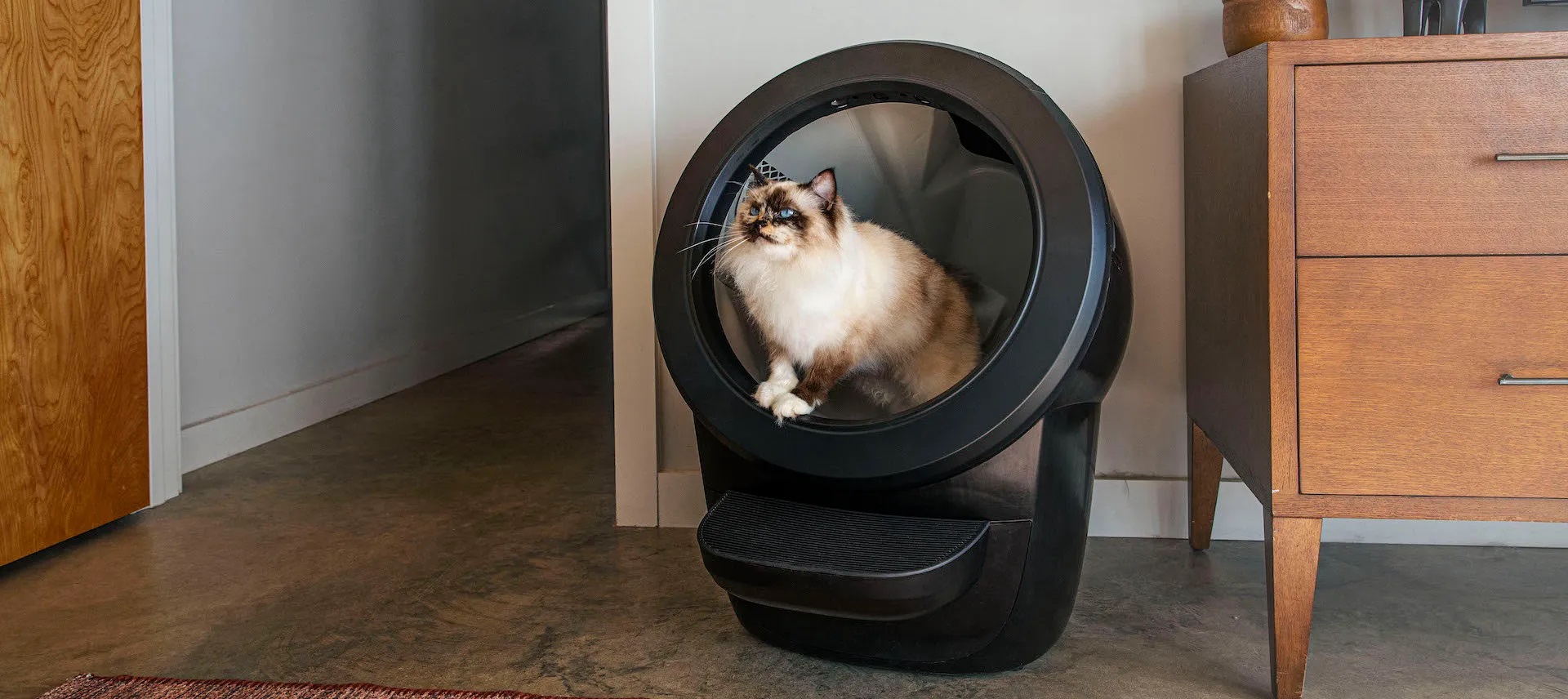

Articles
Where To Put Litter Boxes In Small Apartment
Modified: February 23, 2024
Discover clever interior design ideas for small apartments to find the perfect spot for your litter box without sacrificing style or space.
(Many of the links in this article redirect to a specific reviewed product. Your purchase of these products through affiliate links helps to generate commission for Storables.com, at no extra cost. Learn more)
Introduction
Living in a small apartment can present unique challenges, especially when it comes to finding the ideal location for litter boxes. As a responsible and loving pet owner, it’s important to consider the comfort and well-being of your furry friend while also maintaining a clean and functional living space.
When determining where to put litter boxes in a small apartment, there are several factors to consider. These include the size and number of litter boxes, privacy and accessibility for your cat, odor control, noise reduction, space-saving solutions, and ease of maintenance and cleaning.
In this article, we will explore these factors in detail and provide you with some possible locations for placing litter boxes in your small apartment. By considering these factors and choosing the most suitable placement for your cat’s litter box, you can create a harmonious living environment for both you and your feline companion.
Key Takeaways:
- Strategically placing litter boxes in a small apartment involves considering factors like size, privacy, odor control, and space-saving solutions. By prioritizing your cat’s comfort and cleanliness, you can create a harmonious living environment.
- Multi-purpose furniture offers a stylish and space-efficient solution for concealing litter boxes in small apartments. By integrating functional and aesthetically pleasing furniture, you can seamlessly blend your cat’s needs with your home decor.
Factors to Consider
When deciding where to put litter boxes in your small apartment, there are several important factors to keep in mind. By considering these factors, you can ensure that your cat’s litter boxes are placed in optimal locations that provide both comfort and convenience for your pet, as well as practicality for you as the owner.
- Size and number of litter boxes: The size of your apartment will largely dictate the number of litter boxes you should have. As a general rule, it is recommended to have one litter box per cat, plus one extra. The size of the litter box should be appropriate for your cat’s size and allow them to comfortably enter, turn around, and dig.
- Privacy and accessibility: Cats value their privacy when using the litter box. Consider placing the litter boxes in areas where they can have some seclusion, such as in a corner or behind a screen. However, it’s also important to ensure that the litter boxes are easily accessible for your cat, without any obstacles or barriers.
- Odor control: One of the biggest concerns in small apartments is the potential for litter box odors to spread throughout the living space. Look for litter boxes with odor control features and choose a high-quality litter that helps to minimize odors. Additionally, consider placing the litter boxes in well-ventilated areas or near a window to allow for proper airflow.
- Noise reduction: Some cats can be startled or bothered by loud noises, which may deter them from using the litter box. Avoid placing the litter boxes in areas with high levels of noise, such as near appliances or in high-traffic areas. Opt for quieter spaces where your cat can feel at ease.
- Space-saving solutions: In a small apartment, space is often at a premium. Look for creative ways to maximize the available space by utilizing vertical areas or incorporating multi-purpose furniture. Choose litter boxes that can fit into compact spaces or consider using litter box furniture that doubles as a decorative piece.
- Maintenance and cleaning: Regular cleaning and maintenance are crucial for keeping the litter boxes hygienic and odor-free. Opt for litter boxes that are easy to clean, with removable liners or trays. Consider placing the litter boxes in easily accessible areas, where you can quickly and efficiently clean them without disrupting your daily routine.
By taking these factors into account, you can ensure that your cat’s litter boxes are strategically placed in your small apartment, promoting their comfort and your convenience while minimizing potential issues such as odor or noise. Now that we have discussed the factors to consider, let’s explore some possible locations for placing litter boxes in a small apartment.
Size and number of litter boxes
When determining the size and number of litter boxes for your small apartment, it is essential to consider the needs of your cat and the available space. Generally, it is advisable to have one litter box per cat, plus an additional box as a backup option.
The size of the litter box depends on your cat’s size and comfort. Ideally, it should be large enough for your cat to comfortably enter, turn around, and dig without feeling confined. If you have a larger or older cat, consider getting a litter box with higher sides to prevent litter spillage.
In a small apartment, it’s crucial to find litter boxes that are space-efficient. Look for compact litter boxes that utilize the available space optimally. There are various types of litter boxes, including traditional open boxes, covered boxes, and even corner litter boxes designed to fit into tight corners.
If you have multiple cats, it is essential to provide enough litter boxes to avoid any territorial conflicts. Each cat should have their designated litter box to ensure they feel secure when using it. Additionally, having multiple litter boxes helps distribute the load and prevents overcrowding.
Consider strategically placing the litter boxes in different areas of your apartment to provide easy access for your cats. This can help prevent accidents and discourage inappropriate elimination outside the litter boxes.
Remember to regularly clean and maintain the litter boxes to keep them hygienic and odor-free. Scoop the litter at least once a day and completely change the litter on a regular basis to maintain cleanliness and freshness.
By considering the size and number of litter boxes, you can ensure that your cats have comfortable and accessible options in your small apartment. This will promote proper litter box usage and help create a harmonious living environment for both you and your feline friends.
Privacy and accessibility
When it comes to choosing the right location for litter boxes in your small apartment, considering both privacy and accessibility for your cat is crucial. Cats are naturally private animals and prefer a secluded area when using their litter boxes. At the same time, it’s important to ensure that the litter boxes are easily accessible for your cat to encourage proper usage.
Here are a few tips to find the balance between privacy and accessibility:
a. Choose a quiet area: Look for a quiet spot in your apartment where the litter boxes can be placed. Avoid high-traffic areas or places near appliances or noisy areas as these can startle or disturb your cat while using the litter box. Choose a peaceful corner or a less frequently used room.
b. Provide visual barriers: Cats appreciate privacy while using the litter box. Consider placing the litter boxes in areas that offer some visual barriers, such as behind a screen or a low bookshelf. This will create a sense of seclusion for your cat and make them feel more comfortable.
c. Easy access: While privacy is important, you should also ensure that the litter box is easily accessible for your cat. Avoid placing it in areas that require your cat to navigate through complicated obstacles or tight spaces. Make sure there is enough room for them to enter and exit the litter box effortlessly.
d. Multiple locations: If you have more than one cat, providing multiple litter box locations can help avoid conflicts and competition. Cats value their territory, so having designated litter boxes for each cat in separate areas of your apartment can reduce stress and promote healthy litter box habits.
e. Consider litter box covers: Another way to provide privacy for your cat is by using a litter box with a cover. Covered litter boxes have a removable lid that gives your cat privacy while containing odors. However, it’s important to note that not all cats prefer covered litter boxes, so observe your cat’s behavior and make adjustments accordingly.
f. Gradual introduction: If you plan to change the location of an existing litter box, it’s advisable to introduce the new location gradually. Move the litter box a few inches each day until it reaches the desired spot. This gradual transition will help your cat adjust to the new location without causing any confusion or anxiety.
By considering both privacy and accessibility, you can find the ideal location for the litter boxes in your small apartment. This will ensure that your cat feels comfortable and secure while using the litter box, promoting proper litter box habits and a harmonious living environment.
Odor control
One of the main concerns when placing litter boxes in a small apartment is the potential for odor. However, with proper measures, you can effectively control and minimize litter box odors, creating a pleasant living environment for both you and your cat.
Here are some tips to help control litter box odors:
a. Choose the right litter: Selecting the right litter can significantly impact odor control. Look for litters specifically designed to control odors, such as those with activated charcoal or baking soda. These additives help absorb and neutralize unpleasant smells, keeping your apartment fresh.
b. Regular cleaning: Regularly scooping the litter box at least once a day can prevent odors from accumulating. Remove any clumps and solid waste promptly to keep the litter box clean and odor-free. Additionally, consider completely changing the litter and thoroughly cleaning the litter box on a regular basis.
c. Use odor control products: Consider using odor control products alongside your regular cleaning routine. There are sprays, powders, and litter additives available that are specifically formulated to eliminate odors and keep the litter box smelling fresh. Follow the instructions provided by the manufacturer for optimal results.
d. Adequate ventilation: Proper ventilation is essential to minimize litter box odors. If possible, place the litter box in a well-ventilated area or near a window to allow for airflow. This will help dissipate any odors and prevent them from lingering in your apartment.
e. Baking soda: Sprinkling a thin layer of baking soda at the bottom of the litter box can help absorb odors. This simple and affordable solution can be effective in neutralizing unpleasant smells and keeping the litter box fresh.
f. Air fresheners: Consider utilizing air fresheners or natural odor absorbers in your apartment to create a pleasant atmosphere. However, ensure that the air fresheners are pet-friendly and avoid placing them directly near the litter box, as some cats may be sensitive to strong scents.
g. Clean the surrounding area: Occasionally, litter particles can get scattered around the litter box area. Regularly sweep or vacuum the surrounding area to prevent any build-up of litter dust or odors. This will help maintain cleanliness and reduce any potential smells in your apartment.
h. Choose a covered litter box: Covered litter boxes can help contain odors within the box and provide additional privacy for your cat. The cover helps to trap odors and prevent them from spreading throughout your apartment. However, it’s important to keep in mind that some cats may prefer open litter boxes, so observe your cat’s preferences and comfort level.
By implementing these odor control measures, you can effectively manage litter box odors in your small apartment. This will create a fresh and pleasant living environment for both you and your cat, ensuring a clean and enjoyable space.
Noise reduction
Creating a peaceful environment for your cat’s litter boxes in a small apartment involves considering noise reduction. Some cats can be easily startled or bothered by loud noises, which can disrupt their litter box habits. To ensure your cat feels comfortable and secure, here are some tips to minimize noise around the litter boxes:
a. Choose a quiet location: Select a quiet area in your apartment to place the litter boxes. Avoid areas with high foot traffic or where loud appliances, such as washing machines or dishwashers, are located. This will reduce the chances of your cat being disturbed by sudden noises while using the litter box.
b. Soundproof the area: If you’re unable to find a completely noise-free spot, consider soundproofing the area where the litter boxes are located. You can use sound-absorbing materials, such as thick curtains, rugs, or foam panels, to help dampen any external noises that could potentially startle your cat.
c. Use white noise: White noise machines or soothing background sounds can help mask any sudden noises and provide a calming atmosphere for your cat. Play soft music or use a white noise machine near the litter box area to help drown out disruptive sounds and create a serene environment.
d. Provide a secluded area: Cats prefer privacy while using their litter boxes. Placing the litter boxes in a secluded area can help minimize noises from reaching your cat. Consider using room dividers or screens to create a designated space for the litter boxes that offers some privacy and shields the area from external disturbances.
e. Avoid loud litter boxes: Some litter boxes can be noisy when your cat scratches or digs. Choose litter boxes that are designed to reduce noise, such as those with a smooth interior surface or with built-in noise-dampening features. This will help keep the litter box experience quiet and undisturbed for your cat.
f. Gradual introduction to noise: If your apartment experiences consistent noise, gradually expose your cat to those sounds over time. This can help them acclimate to the noise and become desensitized, reducing any anxiety or stress associated with loud sounds.
g. Calming aids: If your cat is particularly sensitive to noise or easily stressed, consider using natural calming aids, such as pheromone diffusers or calming sprays. These products can help create a soothing environment and reduce anxiety, allowing your cat to use the litter box with ease.
By taking these noise reduction measures, you can create a quiet and calming environment for your cat’s litter boxes in your small apartment. This will ensure that your cat feels safe and comfortable when using the litter box, promoting good litter box habits and a harmonious living space.
Space-saving solutions
In a small apartment, finding space-saving solutions for your cat’s litter boxes is essential to optimize the available room while ensuring your cat’s comfort. By considering efficient use of space, you can maintain a clutter-free living area and provide a dedicated litter box area for your feline companion. Here are some space-saving ideas:
a. Utilize vertical space: Take advantage of vertical space by utilizing wall-mounted shelves or cat trees that incorporate hidden litter box compartments. These innovative designs not only provide a designated area for the litter box but also double as a vertical playground for your cat.
b. Choose compact litter boxes: Opt for compact litter boxes that are specifically designed for small spaces. Look for styles that are not only space-saving but also provide your cat with sufficient room to move comfortably. Consider corner litter boxes, oval-shaped boxes, or those with a triangular design to fit snugly in tight areas.
c. Use multi-purpose furniture: Invest in furniture pieces that serve a dual purpose, such as an ottoman or a bench with a hidden litter box compartment. These functional furniture items are discreet and help maximize space while keeping the litter box out of sight.
d. Consider litter box furniture: Litter box furniture offers an innovative solution by seamlessly integrating the litter box into stylish and functional pieces. These specially-designed furniture items provide a dedicated space for the litter box while also serving as a decorative element in your apartment.
e. Underneath furniture: Utilize the space underneath existing furniture, such as a table or a desk, to discreetly place the litter box. This allows you to fully utilize the available floor space while keeping the litter box hidden and out of the way.
f. Install a cat door: If you have a separate room or closet in your small apartment, consider installing a cat door to provide your cat with access to their litter box. This allows you to keep the litter box area separate from the main living space, providing your cat privacy while reducing any potential odors.
g. Stackable storage: Use stackable storage systems to create a vertical storage solution for cat supplies, including litter, litter scoops, and cleaning supplies. By keeping everything organized and compact, you can save valuable floor space in your small apartment.
h. Floating shelves: Install floating shelves near a wall to create an elevated space for the litter box. This not only saves floor space but also provides your cat with a perch to observe their surroundings while using the litter box.
Remember to ensure that any space-saving solutions you implement maintain the privacy, accessibility, and comfort of your cat when using the litter box. By utilizing these creative ideas, you can make the most of your small apartment while providing a dedicated area for your cat’s litter boxes.
Maintenance and cleaning
Maintaining a clean and hygienic environment for your cat’s litter boxes in a small apartment is essential not only for your cat’s health but also for your own comfort. By incorporating proper maintenance and cleaning practices, you can ensure that the litter boxes are kept fresh and odor-free. Here are some tips to help you efficiently maintain and clean the litter boxes:
a. Regular scooping: Scoop the litter boxes at least once a day to remove clumps and solid waste. Regular scooping prevents odor buildup and ensures that your cat has a clean place to do their business.
b. Complete litter change: Schedule regular complete litter changes to maintain cleanliness. How often you change the litter depends on the type of litter used and the number of cats. Generally, a complete litter change every 1-2 weeks is recommended.
c. Cleaning supplies: Use pet-friendly cleaning supplies when cleaning the litter boxes. Avoid using harsh chemicals or strong-scented cleaners, as these can be off-putting to your cat. Simple dish soap and water can be effective in cleaning the litter boxes.
d. Wipe down the litter boxes: After emptying the litter, thoroughly wipe down the litter boxes with a damp cloth or sponge. This helps remove any residual litter dust or debris and keeps the litter boxes hygienic.
e. Use liners or tray inserts: Consider using liners or tray inserts in the litter boxes to make cleaning easier. Liners can be easily removed and replaced, while tray inserts can be discarded and replaced entirely, reducing the need for extensive scrubbing or washing of the litter boxes themselves.
f. Clean the surrounding area: Along with cleaning the litter boxes themselves, be sure to clean the surrounding area as well. Sweep or vacuum any litter particles that may have been tracked outside the litter boxes to maintain a tidy living space.
g. Deodorize: To keep your apartment smelling fresh, consider using natural deodorizers near the litter boxes. Baking soda sprinkled in the bottom of the litter boxes or on top of the litter can help absorb odors. You can also place odor-neutralizing products or air fresheners in the vicinity of the litter boxes, ensuring a pleasant environment.
h. Regular deep cleaning: Periodically, do a thorough deep clean of the litter boxes to eliminate any lingering odors or bacteria. Disinfect the litter boxes using a pet-safe disinfectant or a mixture of vinegar and water. Rinse thoroughly and allow the litter boxes to dry completely before adding fresh litter.
By incorporating these maintenance and cleaning practices, you can ensure that your cat’s litter boxes in your small apartment remain clean, fresh, and hygienic. This will promote a healthy environment for your cat and create a pleasant living space for both of you.
Possible Locations for Litter Boxes
When it comes to finding the best locations for litter boxes in your small apartment, it’s important to consider the needs of your cat, the available space, and your own preferences. Here are some possible locations to consider:
1. Bathroom: The bathroom is a popular choice for placing litter boxes. It offers privacy and is typically an easy-to-clean space. Consider placing the litter boxes in a corner or a designated area within the bathroom, making sure there is enough room for your cat to enter and exit comfortably.
2. Bedroom: If you have enough space, placing a litter box in the bedroom can be convenient for both you and your cat. Choose a quiet corner of the room, away from your bed or sleeping area, to avoid any disturbances during the night. Ensure proper ventilation and cleanliness to maintain a fresh environment.
3. Closet: If you have a spacious closet, consider converting a corner or a section of it into a discreet litter box area. Use a cat door or keep the closet slightly open to provide your cat easy access while keeping the litter box hidden away.
4. Laundry room: The laundry room can be an ideal location for litter boxes, especially if it is well-ventilated. Place the litter boxes in a corner or dedicate a specific area for them. Remember to keep the litter boxes away from any chemicals or detergents that may be harmful to your cat.
5. Kitchen: While it may not be the most traditional choice, the kitchen can be a suitable location if you have limited space in your apartment. Choose a corner or a less busy area of the kitchen to place the litter boxes, ensuring proper hygiene and keeping them away from food preparation areas.
6. Living room: If you spend a significant amount of time in your living room, you may consider placing a litter box discreetly in a corner. Use decorative elements such as curtains, room dividers, or furniture to create a separation between your cat’s litter box area and your main living space.
7. Balcony or outdoor area: If you have access to a balcony or an outdoor area, consider placing a litter box there, especially if your cat enjoys spending time outside. Ensure that the litter box is protected from the elements and that your cat can access it comfortably.
8. Multi-purpose furniture: Invest in multi-purpose furniture that serves as litter box enclosures. These furniture pieces offer a discreet solution by incorporating hidden litter box compartments, such as cabinets or side tables.
Remember to always maintain cleanliness, regularly clean the litter boxes, and provide adequate privacy and accessibility for your cat. By carefully choosing the locations for your cat’s litter boxes in your small apartment, you can create a comfortable living space for both you and your feline companion.
Place litter boxes in quiet, easily accessible areas, away from food and water. Consider using covered boxes to minimize odor and space. Keep them clean to encourage regular use.
Read more: Where To Place Litter Box In An Apartment
Bathroom
The bathroom is a popular choice for placing litter boxes in a small apartment due to its privacy and ease of cleaning. When considering the bathroom as a location for your cat’s litter box, there are a few things to keep in mind to ensure the best setup for both you and your feline friend.
1. Choose a corner or a designated area: Look for a corner in the bathroom where the litter box can be placed. This helps maintain the privacy of your cat while keeping the litter box out of the way. Alternatively, you can designate a specific area within the bathroom for the litter box.
2. Ensure sufficient ventilation: Proper ventilation is essential to prevent any unpleasant odors from lingering in the bathroom. If your bathroom has a window, try placing the litter box near it to allow for natural airflow. If there is no window, consider using an exhaust fan or keeping the bathroom door slightly open to promote air circulation.
3. Provide easy access: Ensure that the litter box is easily accessible for your cat. If your bathroom has a low entrance or a bathtub, it may be easier for your cat to get in and out of the litter box. If needed, you can use a small ramp or step stool to assist your cat.
4. Consider litter-catching mats: To minimize tracking and litter scatter, place a litter-catching mat underneath or around the litter box. These mats help trap any loose litter and prevent it from spreading throughout the bathroom, making it easier to clean.
5. Regular cleaning: Regularly clean the litter box to maintain hygiene and prevent odor buildup. Scoop the litter box at least once a day, removing any clumps or solid waste. Periodically, empty the litter, wipe down the litter box with a pet-safe cleaner, and refill it with fresh litter.
6. Keep cleaning supplies nearby: To make the cleaning process more convenient, keep cleaning supplies, such as scoops, liners, and cleaning sprays, within easy reach in the bathroom. This ensures that you can quickly attend to any messes or maintenance needs of the litter box.
7. Consider a covered litter box: If you prefer to have a covered litter box in the bathroom, it can help contain odors and provide your cat with privacy. However, be mindful that some cats may prefer open litter boxes, so observe your cat’s behavior and comfort level when making this decision.
By choosing the bathroom as the location for your cat’s litter box in your small apartment, you can provide privacy, easy maintenance, and efficient odor control. Remember to regularly clean the litter box, maintain proper ventilation, and ensure your cat’s comfort when using the bathroom as their designated area for elimination.
Bedroom
The bedroom can be a convenient and suitable location for placing a litter box in your small apartment. It provides your cat with privacy and accessibility while keeping the litter box contained within a designated area. When considering the bedroom as a location for your cat’s litter box, keep the following points in mind:
1. Choose a quiet corner: Look for a quiet corner in your bedroom where the litter box can be placed. This helps provide a peaceful and undisturbed space for your cat to use the litter box. Avoid placing it near your bed or sleeping area to prevent any unwanted smells or disruptions.
2. Provide privacy: Cats value privacy when using the litter box. To ensure your cat feels comfortable, consider enclosing the litter box in a covered or hooded option. This gives them a sense of privacy and helps contain odor. However, it’s essential to monitor your cat’s preference and make adjustments if they show signs of discomfort with a covered litter box.
3. Maintain proper ventilation: Good ventilation is important to prevent any unwanted odors from lingering in your bedroom. Consider placing the litter box near a window or using a fan or air purifier to ensure adequate airflow. This helps maintain a fresh and comfortable environment for both you and your cat.
4. Incorporate a litter mat: To minimize tracking of litter, place a litter mat beneath or around the litter box in your bedroom. Mats with textured surfaces help trap litter particles and prevent them from spreading throughout the room, making it easier to clean.
5. Regular cleaning: Regularly clean the litter box to keep it fresh and hygienic. Scoop the litter box daily to remove waste and clumps. If necessary, completely change the litter on a weekly basis to maintain cleanliness.
6. Consider aesthetics: Since the litter box will be in your bedroom, it’s important to consider its appearance. Choose a litter box that blends well with your bedroom decor or consider using a litter box enclosure or furniture designed to discreetly house the litter box. This way, you can maintain a visually pleasing atmosphere while still providing a comfortable space for your cat.
7. Keep noise levels in mind: Some litter boxes can produce noise when your cat digs or scratches. If you’re a light sleeper or easily disturbed by noise, consider opting for a litter box designed to minimize noise or use litter that clumps quietly. This helps ensure a peaceful sleeping environment for you while allowing your cat to comfortably use the litter box.
By selecting an appropriate spot in your bedroom for the litter box, you can provide a private and accessible area for your cat’s needs while maintaining a harmonious and tidy living space. Be mindful of cleanliness and aesthetics to create a comfortable environment for both you and your feline companion.
Closet
Utilizing a closet as a location for your cat’s litter box can be a practical and discreet option in a small apartment. Transforming a corner or section of a closet into a designated litter box area offers privacy and keeps the litter box out of sight. Here are some considerations when using a closet for your cat’s litter box:
1. Assess closet size: Before dedicating a portion of the closet for the litter box, evaluate the size of the closet. Ensure that there is sufficient room for your cat to comfortably enter and exit the litter box without feeling confined or cramped.
2. Create an enclosed space: To maintain privacy and contain any potential odor, consider enclosing the litter box area within the closet. You can achieve this by installing a cat-sized doorway or using a partial curtain or room divider to section off the area.
3. Ventilation: Make sure the closet has adequate ventilation to prevent any trapped odors. Consider keeping the closet door slightly open or installing a small vent or air purifier to promote air circulation and prevent the buildup of unpleasant smells.
4. Lighting: Ensure that there is sufficient lighting in the closet area to help your cat feel comfortable when using the litter box. Consider installing a small battery-operated LED light or using motion sensor lights to provide enough illumination without disturbing your cat during nighttime visits.
5. Organize litter box supplies: Keep litter scoops, liners, and cleaning supplies organized and easily accessible within the closet. This makes maintenance and cleaning convenient and prevents clutter from spilling over into your living space.
6. Regular cleaning: Make a habit of regularly scooping the litter box and keeping the closet area clean. Remove waste and clumps daily and conduct periodic deep cleaning to maintain hygiene. Ensure that you use safe and pet-friendly cleaning products when cleaning the litter box and surrounding area.
7. Monitor ventilation and odor control: Regularly monitor the closet area for any potential odor buildup. Consider using odor-absorbing products or placing some baking soda near the litter box to help control and neutralize any odors. This will help keep the area fresh and comfortable.
8. Consider alternative storage: If necessary, rearrange storage within the closet to make room for the litter box. Utilize shelves or hanging organizers to maximize vertical space and keep other items organized and out of the way.
By repurposing a closet for your cat’s litter box within your small apartment, you can provide your cat with a secluded and dedicated space while maintaining a clean and organized living environment. Regular cleaning and proper ventilation will help ensure the comfort and well-being of your cat and prevent unpleasant odors from spreading throughout your apartment.
Laundry Room
Using the laundry room as a location for your cat’s litter box in your small apartment can be a practical choice. The laundry room offers convenience, privacy, and easy access to water for cleaning purposes. Here are some considerations when placing a litter box in the laundry room:
1. Select a suitable area: Find a corner or a designated spot in the laundry room where the litter box can be placed. Ensure that there is enough space for your cat to comfortably enter and exit the litter box without feeling cramped.
2. Keep it separate from laundry supplies: Make sure to keep the litter box area separate from your laundry supplies. Store cleaning products and detergents in a secure place where your cat cannot access them. This prevents any accidental ingestion or contamination of the litter box.
3. Ventilation: Proper ventilation is essential to prevent the buildup of odors in the laundry room. If the room has a window, consider opening it or installing a small exhaust fan to maintain a fresh and well-ventilated environment. This helps minimize any lingering odors associated with the litter box.
4. Utilize the sink area: If your laundry room has a sink, take advantage of it for easy cleaning of the litter box. You can rinse the litter box and dispose of waste directly into the sink, making the cleaning process more convenient and efficient.
5. Consider storage and organization: Maximize the storage space in the laundry room to keep litter supplies neat and organized. Utilize cabinets, shelves, or hanging organizers to store litter, scoops, liners, and other cleaning supplies. This helps keep everything within reach and maintains a clutter-free environment.
6. Regular cleaning: Establish a routine for regularly scooping the litter box and keeping the surrounding area clean. This helps prevent odor buildup and ensures a hygienic environment for both you and your cat. Consider using non-toxic and pet-safe cleaning products for sanitizing the litter box and the laundry room floor if needed.
7. Noise considerations: Take into account any noise or vibrations from appliances, such as the washing machine or dryer, that may cause your cat to feel uneasy or stressed. Place the litter box away from any noisy machinery to provide a quiet and calm space for your cat to use the litter box.
8. Monitor laundry room temperature: Keep an eye on the temperature in the laundry room, especially during hot seasons. Ensure that the room is adequately cooled to prevent the litter box area from becoming too warm or uncomfortable for your cat.
By utilizing the laundry room as a location for your cat’s litter box in your small apartment, you can provide a designated and easily accessible space that offers convenience and privacy. Regular cleaning and proper ventilation will ensure a pleasant environment for your cat and help maintain a clean and organized laundry area.
Kitchen
Choosing the kitchen as a location for your cat’s litter box in your small apartment can be a practical solution, especially if you have limited space. While it may not be the most traditional choice, the kitchen can offer easy accessibility and convenience. Here are some considerations when placing a litter box in the kitchen:
1. Choose a suitable corner: Look for a corner in the kitchen where the litter box can be placed. Consider an area that is away from food preparation areas and where it won’t hinder your daily activities in the kitchen. Ensure that there is enough space for your cat to comfortably enter and exit the litter box.
2. Maintain cleanliness: Keeping the kitchen clean is crucial when placing a litter box there. Regularly clean the litter box, following proper hygiene practices. Scoop the litter box at least once a day and place a litter-catching mat beneath it to minimize tracking of litter particles.
3. Odor control: Due to the proximity of the litter box to the food preparation area, odor control becomes even more important. Choose a litter that is specifically designed to control odors. Consider using litter box deodorizers or placing a small bowl of baking soda near the litter box to absorb any unpleasant smells.
4. Privacy and accessibility: Cats prefer privacy when using the litter box. Consider using a covered or hooded litter box to provide your cat with the privacy they need. However, always observe your cat’s preference as some cats may feel uncomfortable with a covered litter box.
5. Proper ventilation: Good ventilation is essential in the kitchen to prevent any odors from lingering. Ensure that there is proper airflow in the area where the litter box is placed. Open windows or use exhaust fans to help circulate fresh air and prevent the buildup of any unpleasant smells.
6. Consider a litter box enclosure: To further enhance the aesthetics and discreetness of the litter box in the kitchen, you can use a litter box enclosure. These enclosures are designed to blend in with your kitchen decor and can help contain the litter box while adding an element of style.
7. Regular cleaning and maintenance: Regularly clean the litter box and surrounding area to maintain a clean and odor-free kitchen space. Empty the litter box regularly, wipe it down with a pet-safe cleaner, and refill it with fresh litter. Keep cleaning supplies nearby for convenience.
8. Monitor your cat’s behavior: Pay attention to your cat’s behavior and comfort level when using the litter box in the kitchen. Some cats may prefer a more secluded area, so if your cat seems apprehensive or avoids the kitchen litter box, consider alternative locations within your small apartment.
By carefully considering these factors, you can successfully place a litter box in your kitchen in a small apartment. Ensure cleanliness, odor control, and your cat’s comfort while creating a functional and convenient space for both you and your feline companion.
Living Room
Placing a litter box in the living room of your small apartment can be a suitable option, especially if it is a central area where you and your cat spend a lot of time. While it may seem unconventional, strategic placement and proper maintenance can ensure a harmonious living environment. Here are some considerations when placing a litter box in the living room:
1. Select a discreet corner: Choose a discreet corner in the living room where the litter box can be placed. This allows your cat to have some privacy while also keeping the litter box out of the way and inconspicuous.
2. Utilize decorative elements: Incorporate decorative screens, curtains, or furniture to create a visual separation between the litter box area and the main living space. This helps maintain the aesthetic appeal of the living room while providing privacy for your cat.
3. Regular cleaning: Regularly clean the litter box to prevent odors and maintain cleanliness in the living room. Scoop the litter box at least once a day and promptly remove any waste. This will help create a more pleasant environment for both you and your cat.
4. Odor control: Use odor-controlling litter and consider placing an air freshener or natural odor absorbers near the litter box to maintain a fresh atmosphere in the living room. Regularly airing out the living room can also help prevent any lingering odors.
5. Litter box furniture: Invest in litter box furniture that doubles as a decorative piece in the living room. These furniture pieces are designed to conceal the litter box while providing a functional and aesthetically pleasing addition to your living room decor.
6. Monitor noise levels: Pay attention to any noise associated with the litter box, such as the sound of your cat scratching or digging. Opt for a litter box with noise-reducing features to minimize disruptions in the living room environment, especially if you have sensitive or easily startled cats.
7. Regular maintenance: Consistently maintain the litter box area in the living room by cleaning any litter scatter or spills. Vacuum or sweep the area regularly to prevent any buildup of litter particles. This will help keep the living room tidy and litter-free.
8. Monitor your cat’s behavior: Keep an eye on your cat’s behavior and comfort level with the living room litter box. Some cats may prefer a more secluded area, so if your cat shows signs of stress or avoidance, consider alternative locations within your small apartment.
By carefully considering these factors, you can successfully place a litter box in your living room while maintaining a clean and harmonious space. Proper maintenance, discreet placement, and strategic measures will ensure that the living room remains comfortable for both you and your cat.
Balcony or Outdoor Area
Utilizing a balcony or outdoor area as a location for your cat’s litter box in your small apartment can offer an alternative solution, especially if you have limited indoor space. It provides your cat with a natural environment and allows for easy maintenance. Here are some considerations when using a balcony or outdoor area for your cat’s litter box:
1. Evaluate safety: Before setting up a litter box on the balcony or outdoor area, ensure that the space is safe for your cat. Make sure there are no gaps in railings and that the area is secure, preventing any potential accidents or escapes.
2. Weather protection: Protect the litter box from adverse weather conditions. Use a covered or hooded litter box to keep it dry during rain or snow. Alternatively, place the litter box in a sheltered spot to prevent it from getting wet or filled with debris.
3. Provide shade: Ensure that there is ample shade available on the balcony or outdoor area. This prevents the litter box and your cat from being exposed to direct sunlight for extended periods, especially during hot weather conditions.
4. Easy cleaning: Consider using a litter tray or liner for easier cleaning and maintenance. This allows you to quickly remove waste and replace the litter as needed. Regularly clean and sanitize the litter box to maintain a hygienic environment for your cat.
5. Privacy considerations: While the balcony or outdoor area offers a natural environment, it’s important to provide privacy for your cat. Place the litter box in a secluded corner or use visual barriers, such as potted plants or screens, to create a discrete space for your cat’s elimination needs.
6. Monitor litter scatter: Be mindful of any litter scatter outside of the litter box. Consider using a litter mat or tray to minimize the spread of litter particles. Regularly sweep or clean the balcony or outdoor area to keep it clean and free of litter debris.
7. Check local regulations: Before setting up a litter box on your balcony or outdoor area, check with your apartment complex or local regulations to ensure that it is allowed. Some buildings or municipalities may have specific rules or restrictions concerning pets or outdoor litter boxes.
8. Don’t forget supervision: When your cat is using the litter box on the balcony or outdoor area, it is important to supervise them, especially if the area is accessible to other animals or if there are potential safety concerns. This ensures your cat’s safety and well-being while they are eliminating outside.
By taking these considerations into account, you can provide your cat with a natural outdoor environment for their litter box needs in your small apartment. Ensure proper weather protection, cleanliness, and privacy to create a safe and comfortable space for your cat to eliminate outside.
Multi-purpose Furniture
Utilizing multi-purpose furniture for your cat’s litter box in your small apartment is an innovative solution that combines functionality and aesthetics. These furniture pieces serve a dual purpose by incorporating hidden compartments to discreetly house the litter box. Here are some considerations when using multi-purpose furniture for your cat’s litter box:
1. Litter box enclosure: Invest in furniture specifically designed to serve as a litter box enclosure. These stylish pieces often resemble cabinets, benches, or side tables. They provide a dedicated space for the litter box while seamlessly blending into your existing home decor.
2. Design and aesthetics: Choose multi-purpose furniture that complements your interior design. Consider the color, style, and materials used in the furniture to ensure it matches your overall decor scheme. This allows the litter box to become a discreet and integrated part of your apartment.
3. Accessibility: Ensure that the furniture piece provides easy access for your cat to enter and exit the litter box. Look for furniture with built-in entrances or holes that specifically cater to your cat’s needs. This allows your cat to use the litter box comfortably while keeping it concealed.
4. Ventilation and odors: Select furniture pieces that offer proper ventilation to prevent the buildup of odors. Look for furniture with vents or openings that allow for good airflow. Additionally, consider using litter with odor-controlling properties to keep any smells at bay.
5. Cleaning and maintenance: Consider furniture that makes cleaning and maintenance a straightforward process. Look for furniture with removable panels or trays that allow for convenient access to the litter box for scooping, cleaning, and replacing the litter.
6. Space efficiency: Multi-purpose furniture is designed with space efficiency in mind. Look for compact and streamlined options to maximize the use of your small apartment. This allows you to create a functional litter box enclosure without sacrificing valuable floor space.
7. Visual separation: Use multi-purpose furniture to visually separate the litter box area from the rest of your living space. This helps create a discreet and dedicated zone for your cat while seamlessly integrating the furniture into the overall design of your apartment.
8. Cat comfort: Prioritize your cat’s comfort when choosing multi-purpose furniture. Ensure that there is enough space inside the furniture piece for your cat to move around and comfortably use the litter box. Provide additional comforts, such as a soft bed or mat, inside the furniture for your cat to relax after using the litter box.
By incorporating multi-purpose furniture into your small apartment, you can create a functional and visually appealing space for your cat’s litter box needs. Combine style, practicality, and comfort to seamlessly integrate the litter box into your home while optimizing your living space.
Read more: Where Do You Put A Cat Litter Box
Conclusion
When it comes to finding the ideal locations for litter boxes in a small apartment, several factors need to be considered. By carefully evaluating the size and number of litter boxes, privacy and accessibility, odor control, noise reduction, space-saving solutions, maintenance and cleaning, and possible locations, you can create a comfortable and harmonious living environment for both you and your cat.
Size and number of litter boxes should be determined based on your apartment’s size and the number of cats you have. Providing enough litter boxes ensures that each cat has access to a clean and comfortable space. Privacy and accessibility are crucial, so consider secluded areas and easy access for your cats to encourage proper litter box usage.
Odor control is essential in a small apartment. Choose litter with odor-controlling properties and implement regular cleaning and maintenance routines to keep the litter boxes fresh and odor-free. Noise reduction can be achieved by selecting quieter litter boxes and placing them away from noisy areas in your apartment.
Space-saving solutions like utilizing vertical space, multi-purpose furniture, and clever storage options help maximize the available space and keep your apartment visually appealing. Regular cleaning and maintenance routines are necessary to ensure a hygienic and pleasant environment for both you and your cat.
Considering possible locations such as the bathroom, bedroom, closet, laundry room, kitchen, living room, balcony, or outdoor area allows you to find the most suitable placement based on your apartment’s layout and your cat’s needs.
Ultimately, finding the perfect locations for litter boxes in your small apartment requires a balance of practicality and consideration for your cat’s well-being. By taking into account the factors mentioned in this article and making informed decisions, you can create a comfortable and functional litter box setup that ensures a happy and healthy living space for both you and your beloved feline companion.
Frequently Asked Questions about Where To Put Litter Boxes In Small Apartment
Was this page helpful?
At Storables.com, we guarantee accurate and reliable information. Our content, validated by Expert Board Contributors, is crafted following stringent Editorial Policies. We're committed to providing you with well-researched, expert-backed insights for all your informational needs.
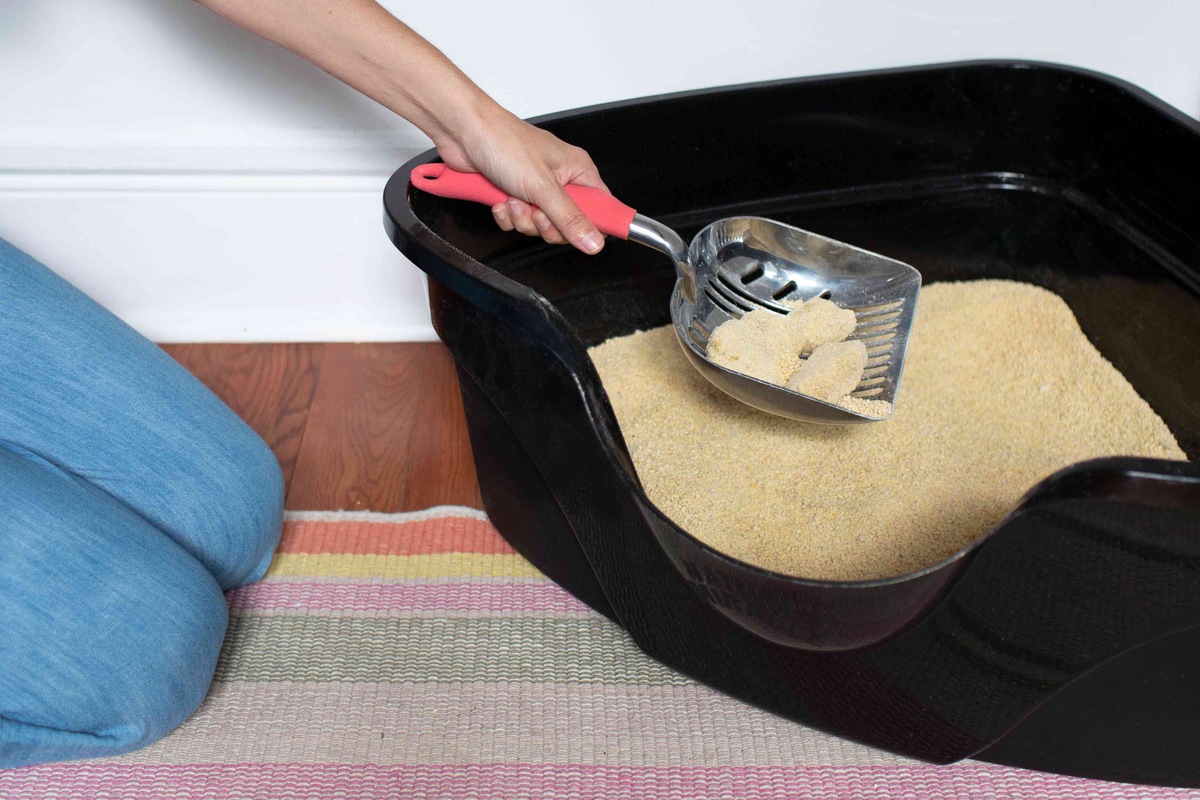
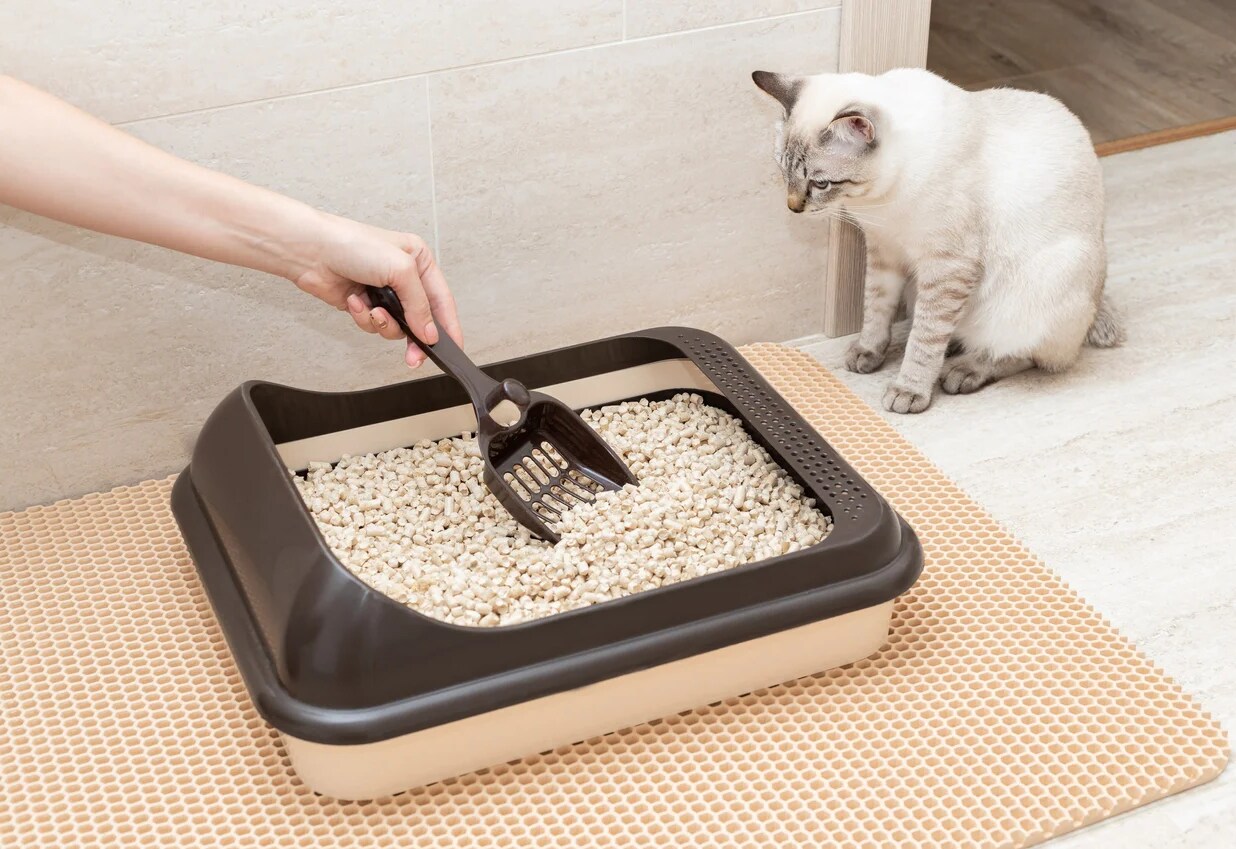
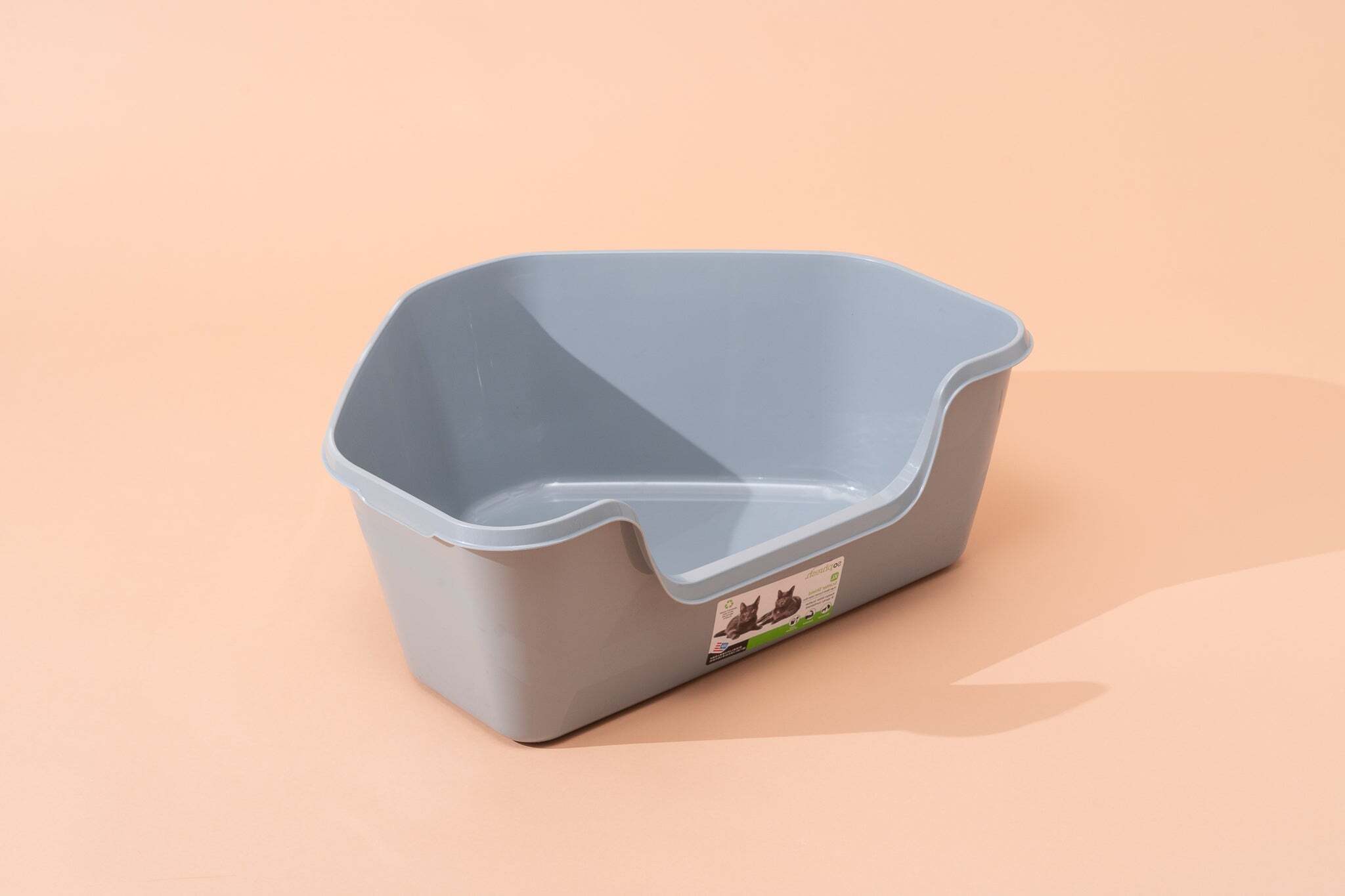
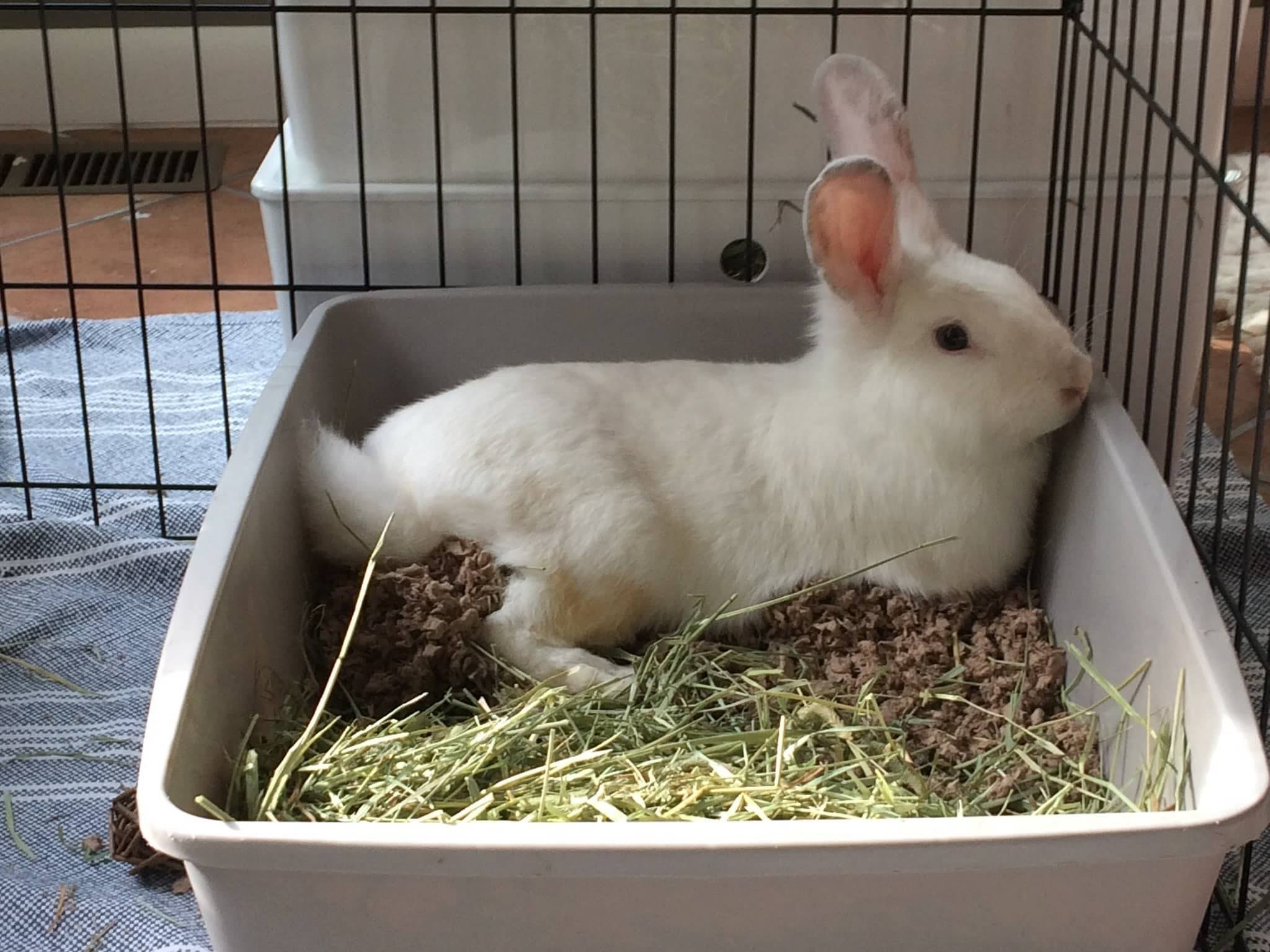

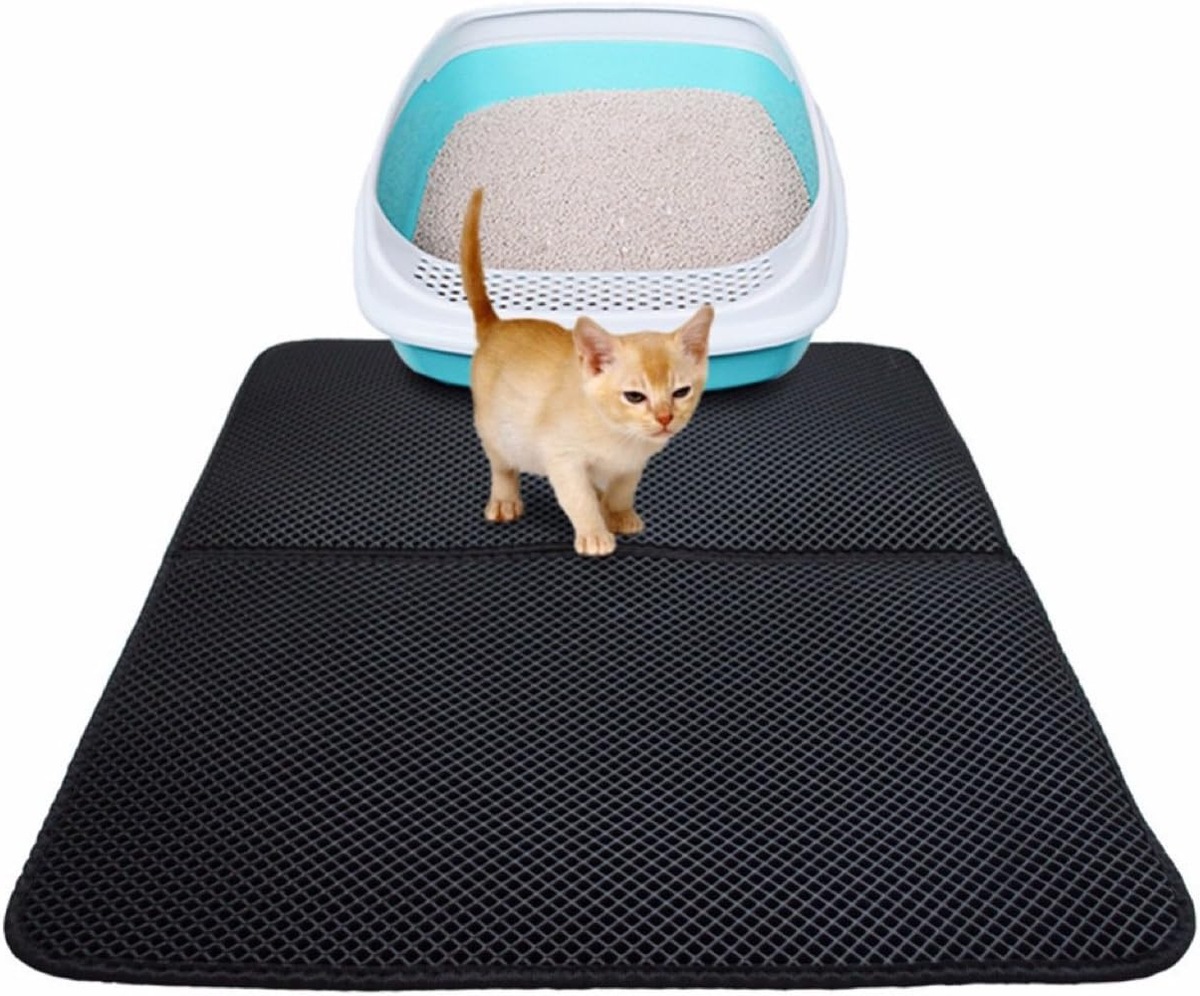
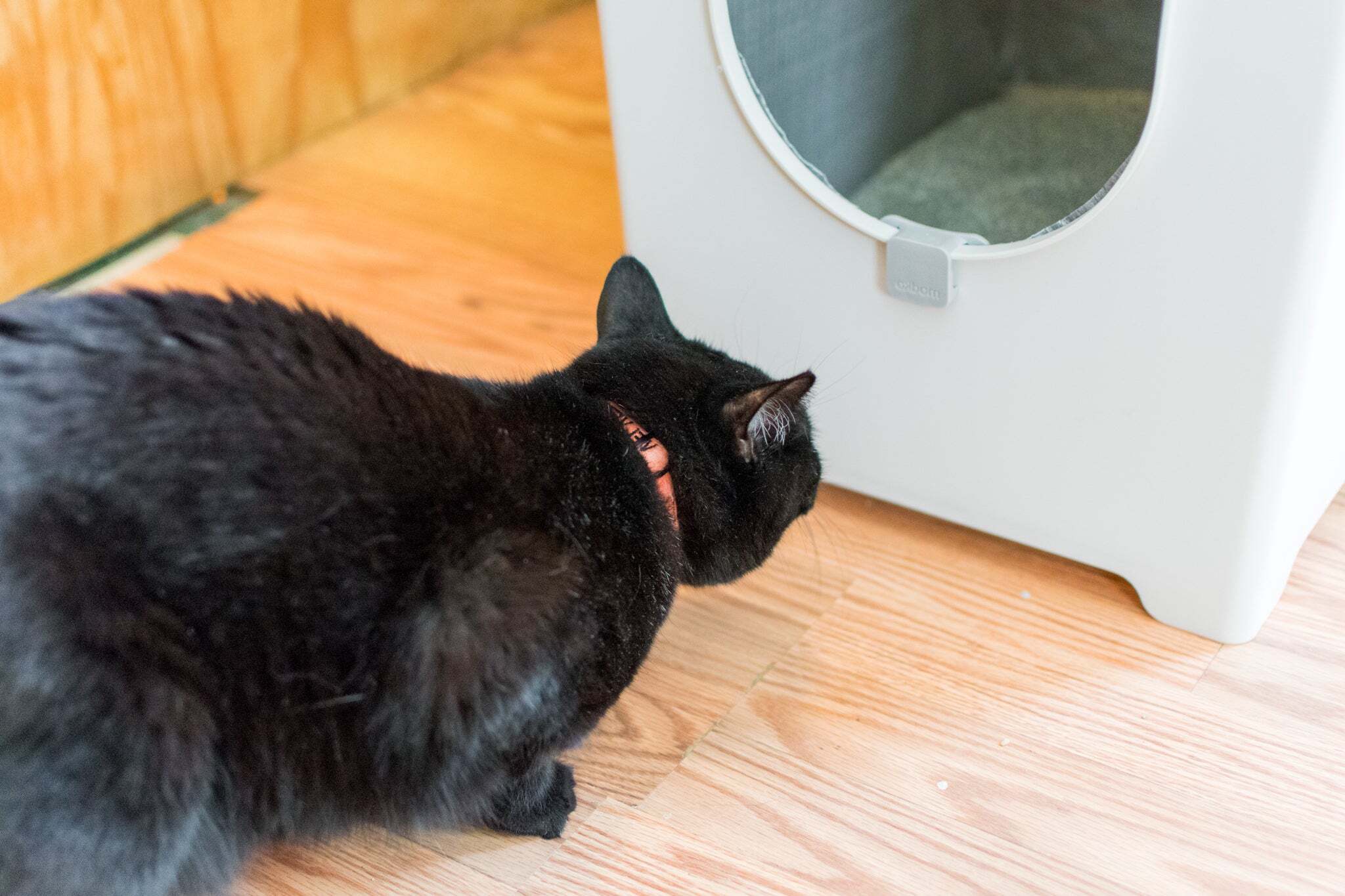
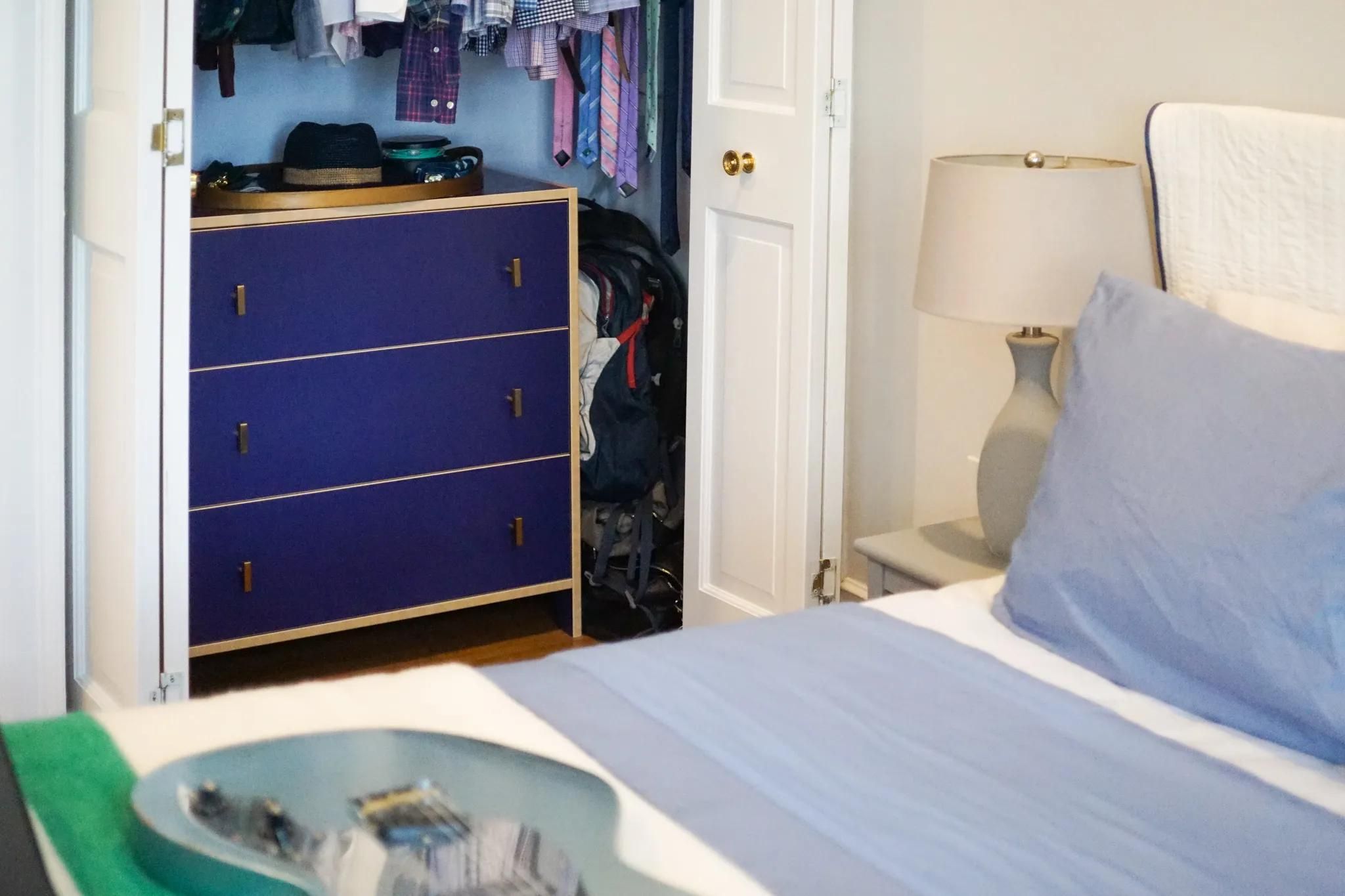

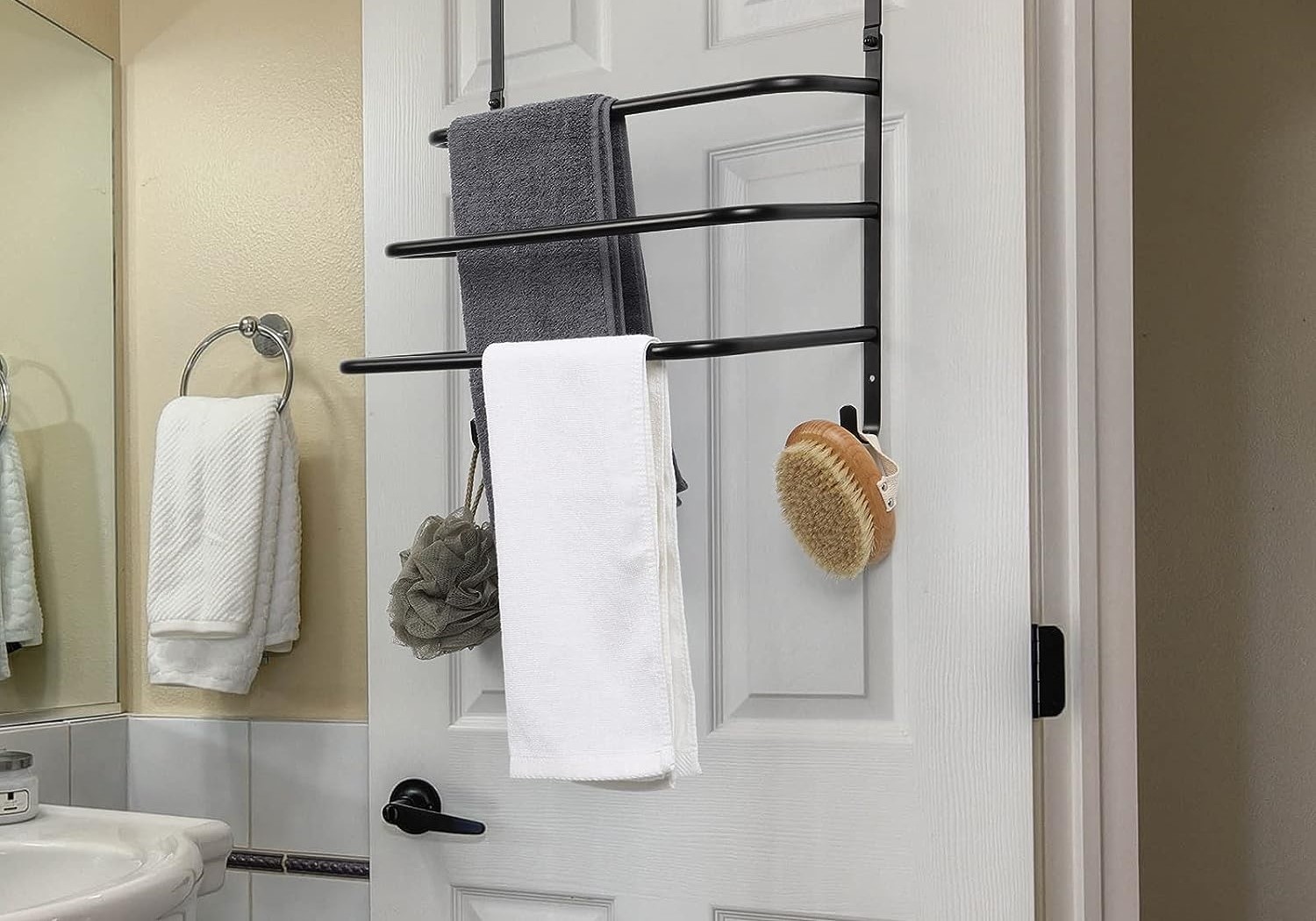
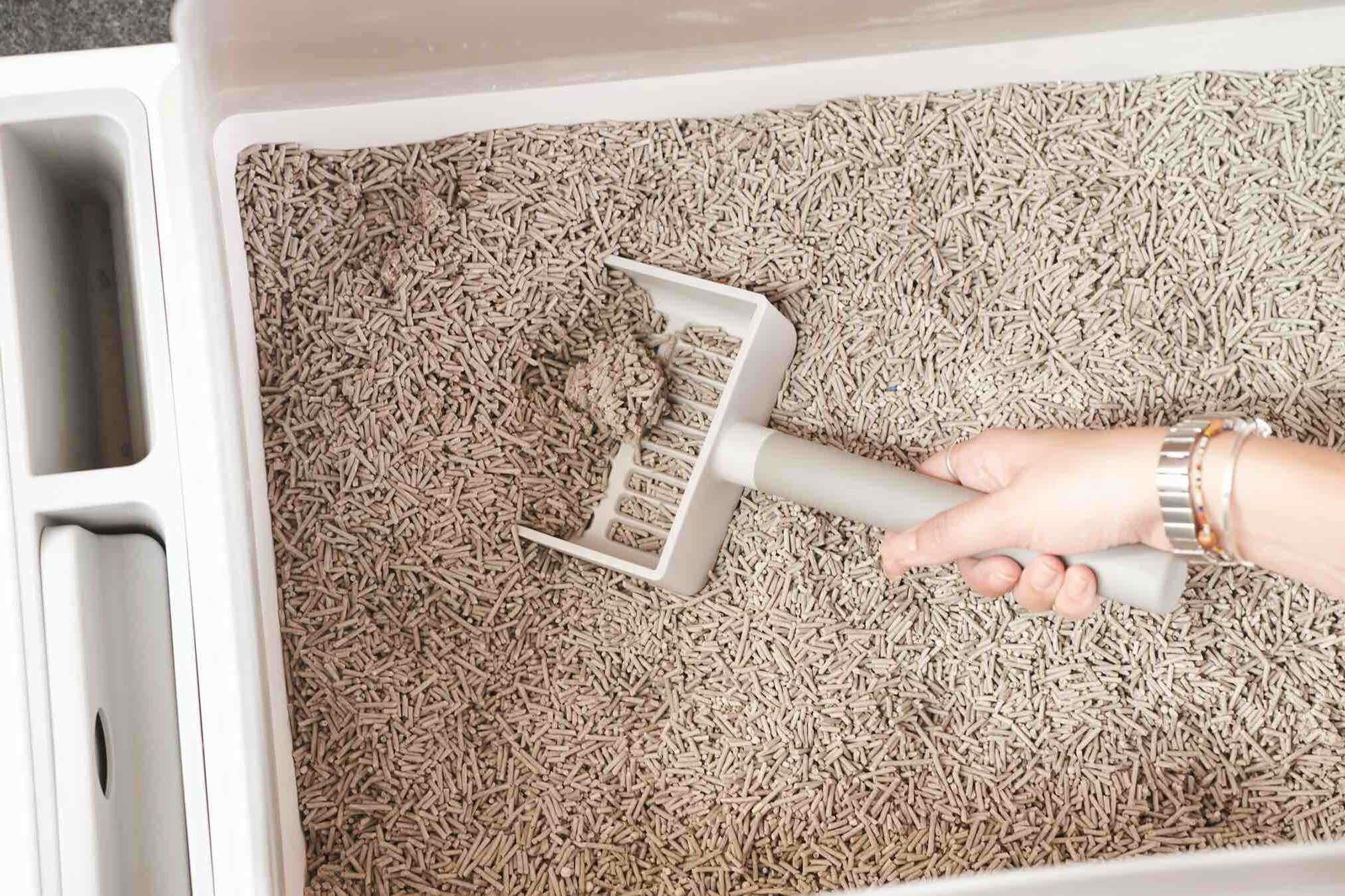

0 thoughts on “Where To Put Litter Boxes In Small Apartment”